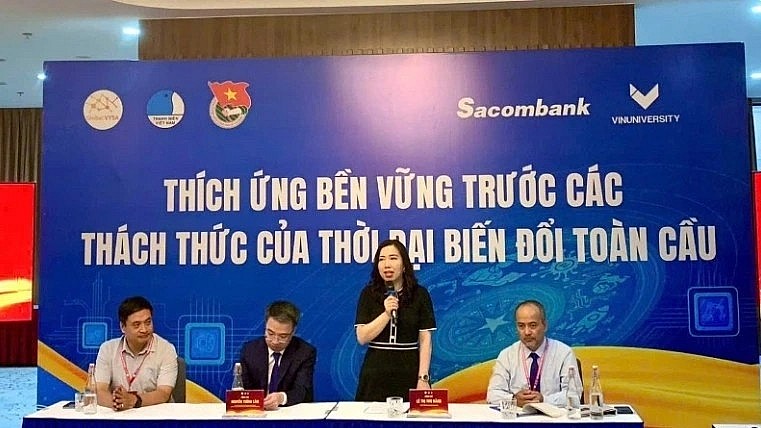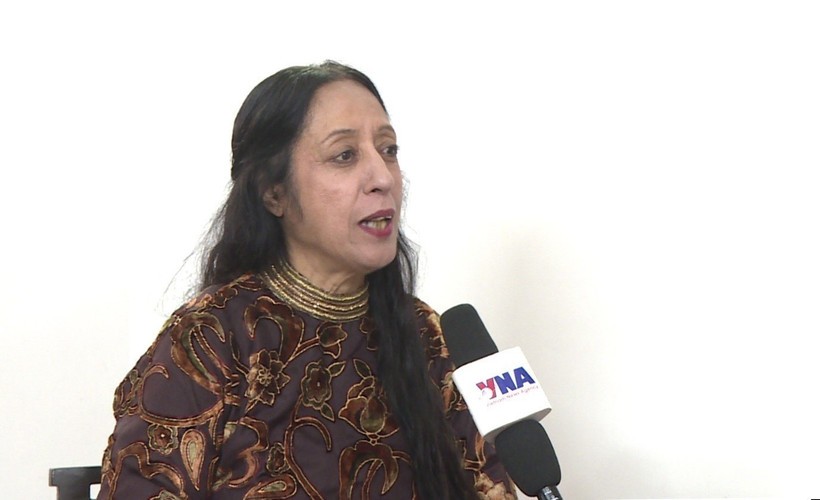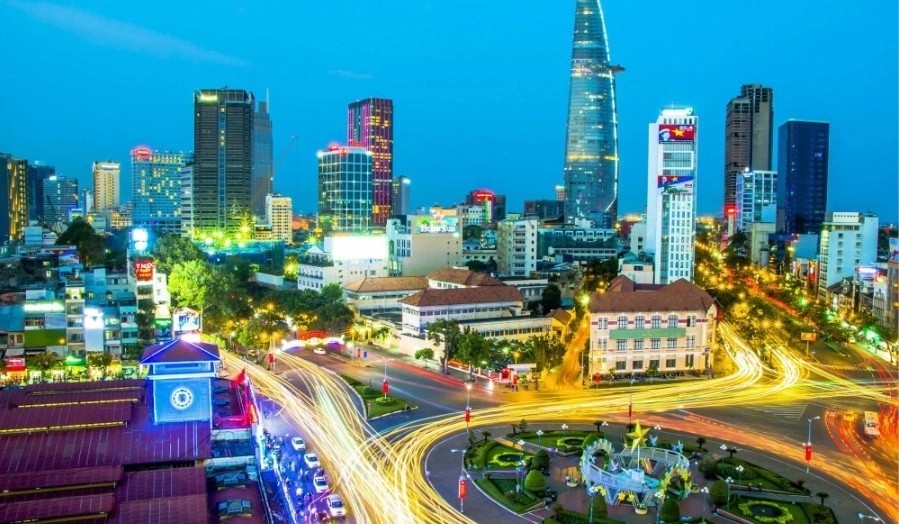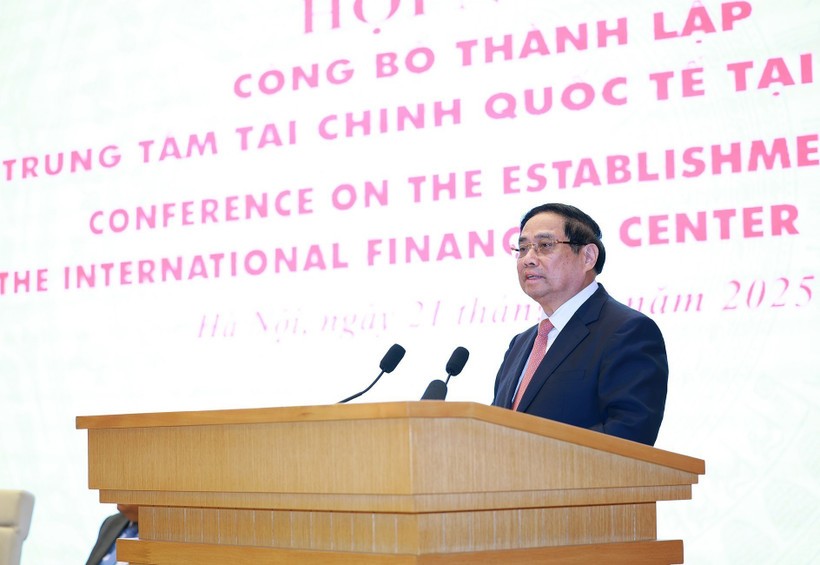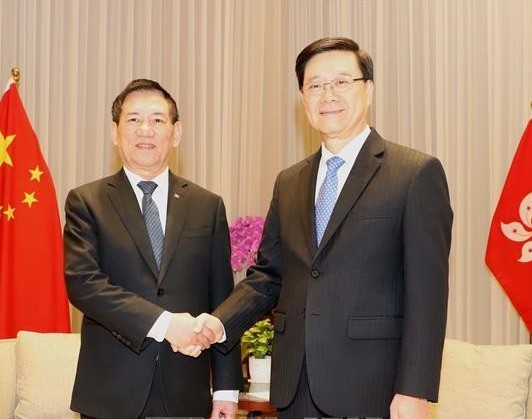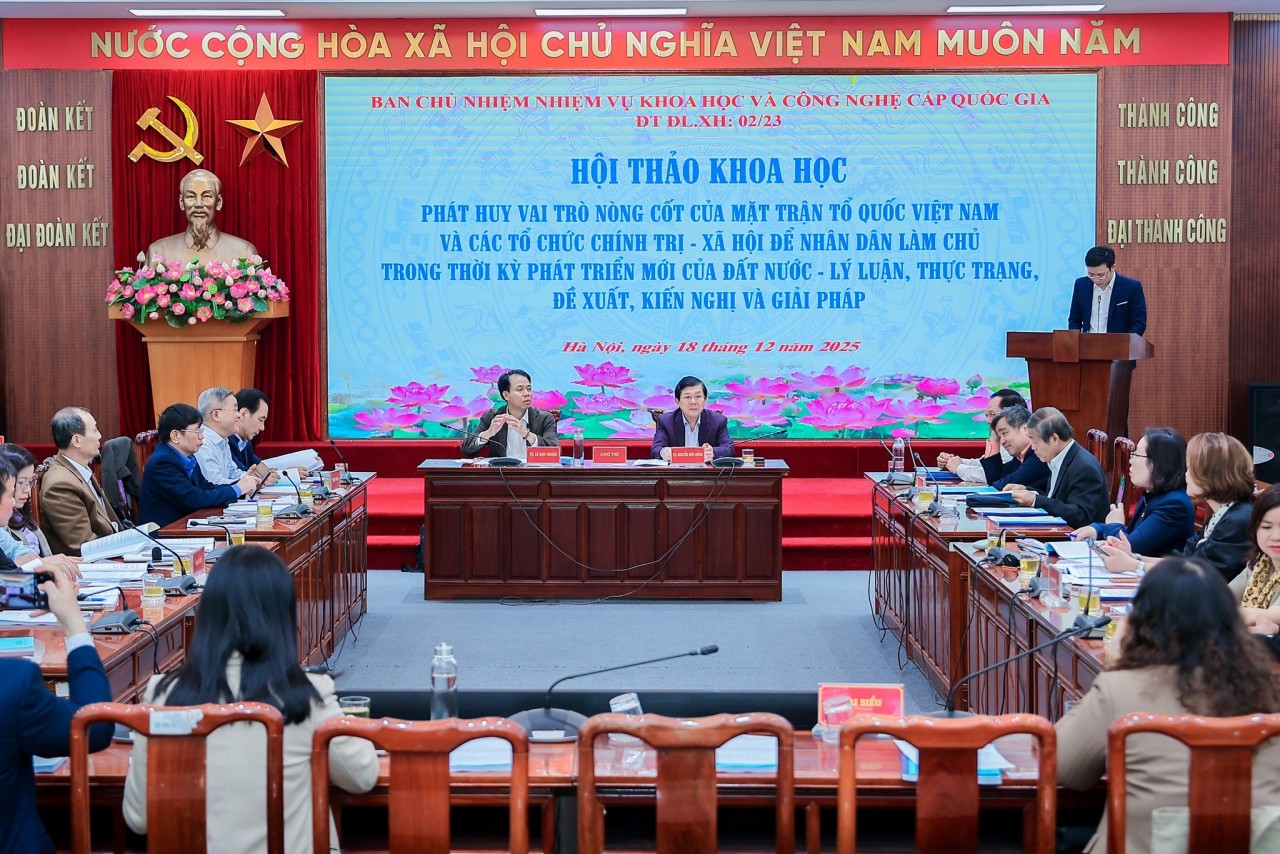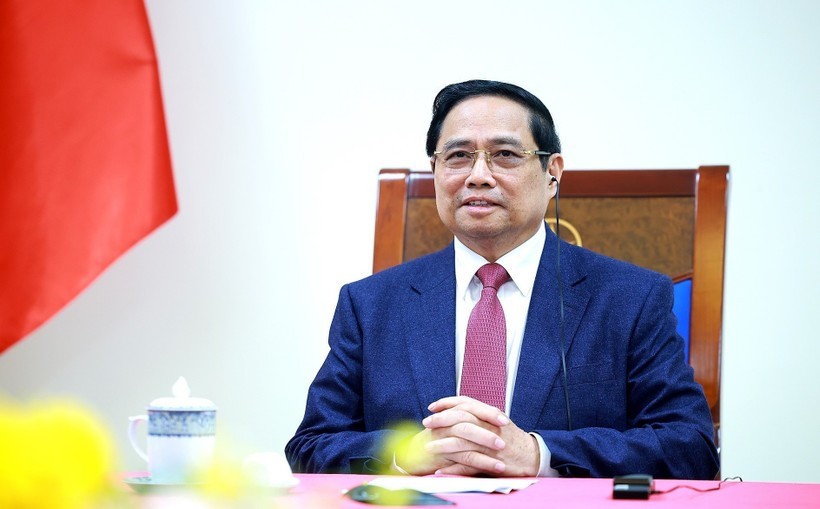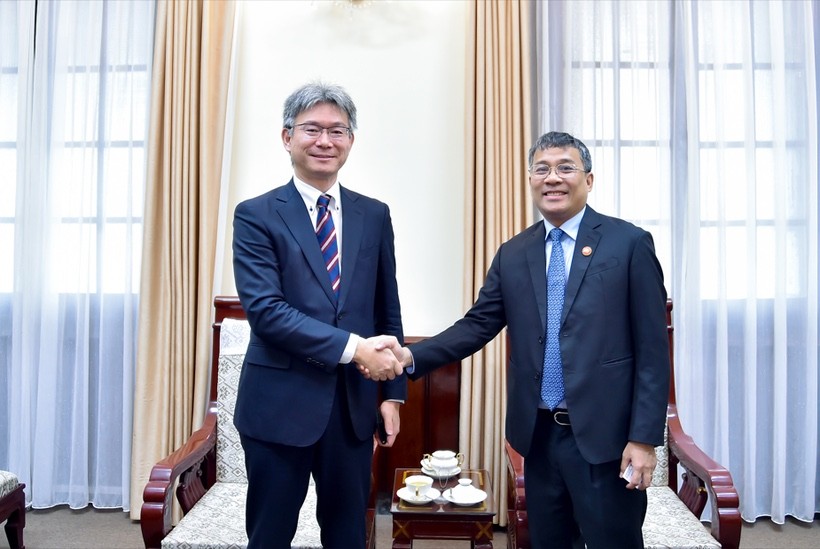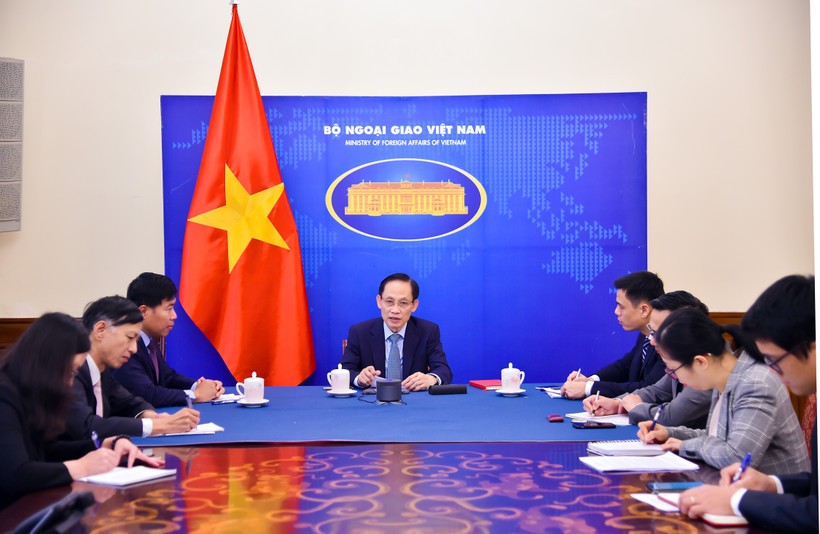Digital transformation unlocks new markets for Vietnamese businesses
Prime Minister Pham Minh Chinh on June 18 issued Directive No. 18/CT-TTg, which emphasizes the need to step up trade promotion efforts both domestically and internationally. The key focus of this directive is to encourage commercial activities on digital platforms, reduce dependence on traditional methods, and expand export markets through trade agreements.
Experts said digital transformation in trade promotion involves deploying technologies such as e-commerce, big data, and artificial intelligence to conduct product marketing, business matchmaking, and partner searches. Compared to conventional models, this approach allows enterprises to reach customers faster, at lower cost, and with greater flexibility.
By early 2025, approximately 32% of small and medium-sized enterprises (SMEs) had formed international business connections through online platforms. Cross-border e-commerce is becoming a significant trend, driven by platforms such as Amazon, Alibaba, and Shopee Global, which have created easier avenues for Vietnamese products to reach consumers around the world.
BaKa Co. Ltd. in central Gia Lai province, a speciality coffee producer, reported that its weekly livestream sessions – combining demonstrations of its closed-loop production process with direct promotional offers – have driven a revenue increase of over 30% according to VNA.
 |
| Content creators help farmers in Hung Yen province promote and sell longan and OCOP agricultural products on TikTok. |
Do Thi Gam, chairwoman of Ngoc Tra ecological herbal cooperative in Ninh Binh province, said her cooperative has attracted a substantial new customer base across several provinces and cities after receiving training in livestream techniques and effective product presentation. It now sells over 100kg of herbal products monthly, reaching 200kg in peak months.
The Hena Agricultural Cooperative in Dak Lak province, which specializes in essential and cold-pressed oil, noted that building its brand on social media and e-commerce platforms has helped it access new customer segments and secure production and distribution deals with major partners in Malaysia, Taiwan (China), New Zealand, and Australia.
Van Quoc Viet, Director of Ngon Avatar Company, remarked that in the past, the firm had to participate in regional trade fairs or rely on agent networks to promote its coffee products. Now, with just a mobile phone and a stable internet connection, Ngon Avatar can introduce products directly to consumers nationwide, he said, adding that the costs have fallen, while the impact has risen significantly.
To support businesses in this shift, the Ministry of Industry and Trade’s Vietnam E-commerce and Digital Economy Agency announced plans to enhance training programmes, especially via online formats tailored to businesses' needs. Upcoming initiatives will focus on four key pillars: Go Online, Go Export, Go AI, and Go Right.
Vu Ba Phu, Director of the Vietnam Trade Promotion Agency (Vietrade), affirmed that future trade promotion will adopt a hybrid approach, blending traditions and modernity in association with e-commerce and digital economy.
Vietnam charts strong economic course with high-tech and FDI boost
Public investment, innovation, and stable inflation helped Vietnam maintain solid economic momentum in early 2025.
Despite global economic headwinds, Vietnam’s gross domestic product (GDP) grew by 7.52% in the first half of 2025 - a robust figure that lays a solid foundation for achieving the annual growth target of 8% or higher.
Positive outlook for the second half of the year
Economic prospects for the latter half of 2025 remain optimistic, with growth expected in public investment, science and technology, digital transformation, innovation, consumer spending, and increased credit flow into the economy.
According to the General Statistics Office (GSO), Vietnam’s GDP grew by 7.52% year-on-year in the first six months, marking the highest mid-year growth rate from 2011 to 2025.
Several macroeconomic indicators also posted impressive results, including inflation, state budget revenue, and public investment disbursement - aligning closely with the government's first-quarter economic scenario.
GSO Director Nguyen Thi Huong attributed the strong performance to favorable conditions. On the production side, all economic sectors and types of enterprises reported uniform growth.
The industrial and construction sectors were key drivers, with added value growing by 8.07% and 9.62% respectively.
Market-oriented service sectors such as transport, logistics, accommodation, and food services also expanded significantly, contributing to production, exports, and tourism.
From a demand perspective, public investment disbursement surged, especially for key infrastructure projects. Foreign direct investment (FDI) rose sharply, particularly in high-tech and semiconductor sectors, enhancing the economy’s long-term production capacity.
Vietnam’s exports surpassed USD 219 billion in the first half of 2025, up 14.4% year-on-year, reflecting strong international demand for Vietnamese goods.
“The harmonious combination of supply and demand factors has created a solid growth engine for the Vietnamese economy,” emphasized Nguyen Thi Huong.
Vigorous efforts to meet 2025 growth targets
In a recent report on Vietnam’s economic performance in the first half of 2025 and projections for the full year, Dr. Can Van Luc, Chief Economist at BIDV, highlighted the economy’s bright spots.
Fiscal policy remained expansionary yet targeted, while monetary policy was managed proactively and flexibly, in close coordination with fiscal measures.
The government aims for full-year credit growth of around 16%. Macroeconomic stability was maintained, and major economic balances were ensured.
Disbursed FDI capital grew by 32.6% year-on-year, reaching an estimated USD 11.72 billion - the highest level in five years, VNN reported.
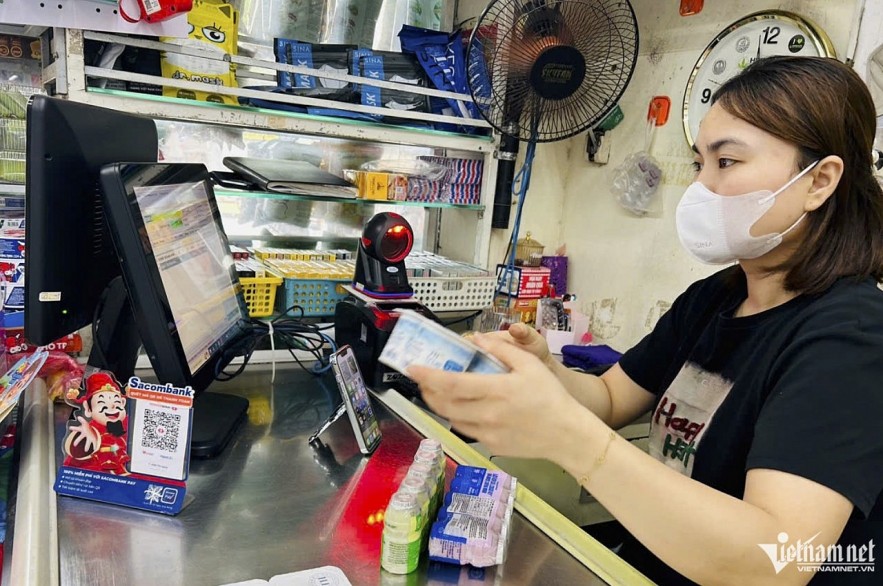 |
| Photo: VNN |
Another key highlight is effective inflation control. The consumer price index (CPI) rose by an average of 3.27% in the first half, while core inflation increased by 3.16% compared to the same period in 2024.
Lending interest rates fell slightly, and credit growth gained momentum. State budget revenue also surged, driven by strong output, consumption, and exports.
Dr. Can Van Luc emphasized that an essential factor behind socio-economic growth in the first half was the restructuring of administrative units by the Party and State.
The implementation of a streamlined two-tier local government model and institutional reforms - particularly the "four-pillar framework" - opened up new development opportunities.
Building trust for investors and enterprises
While positive growth in the first half has eased pressure for the rest of 2025, achieving the full-year growth target of 8% or more will require GDP growth of 8.33% in the third quarter and 8.51% in the fourth quarter, averaging 8.42% for the second half.
This is a significant challenge amid ongoing global uncertainties that could adversely affect Vietnam's open economy.
To boost growth, economists recommend urgently implementing institutional reforms and removing obstacles facing businesses, alongside harmonizing fiscal and monetary policies.
According to Dr. Can Van Luc, it is crucial to effectively implement institutional breakthroughs, operate streamlined post-merger administrative systems efficiently, curb waste, and genuinely improve the business environment.
Additionally, Vietnam must remain adaptive to U.S. tariff policies, effectively implement consumption stimulus programs, and enhance growth quality by establishing a national productivity commission and launching productivity-enhancing campaigns.
For long-term sustainable growth, Dr. Dang Duc Anh, Deputy Director of the Central Institute for Economic Management, stressed the need to maintain macroeconomic stability, build investor and business confidence, and retain prudent and flexible monetary policies.
He also emphasized continued administrative reform, simplifying procedures, ensuring transparency, promoting innovation, fostering regional connectivity, improving productivity, and encouraging green and environmentally responsible development.
Infrastructure modernization fuels development
Vietnam’s GDP growth of 7.52% in the first half of 2025 represents the highest mid-year rate in the past 15 years.
The National Assembly has allocated nearly VND 830 trillion (approximately USD 35.5 billion) in planned public investment for 2025, with additional funding from increased state revenue.
Ministries, sectors, and localities are working aggressively to disburse 100% of this capital, which is critical for economic growth.
To this end, bottlenecks in investment procedures, building materials, and land clearance must be swiftly resolved to accelerate the implementation of national key projects.
According to the GSO, science and technology, innovation, and digital transformation are now regarded as vital drivers of economic growth.
Enterprises are encouraged to embrace new opportunities, adopt AI technologies in production, and increase investment in research and development to reduce costs and boost competitiveness.
Externally, Vietnam continues to attract robust FDI, achieving its highest level since 2009. The GSO recommends that in the coming period, the government and localities should prioritize attracting high-tech FDI projects capable of transferring technology to domestic firms.
This requires focused investment promotion efforts, continued improvement of the business environment, simplified administrative procedures, and transparent policies to increase both the quantity and quality of FDI.
Northern provinces, coastal regions from Quang Ninh to Dak Lak urged to brace for Storm Wipha
In an official dispatch issued on July 19, the Ministry of Agriculture and Environment called on People’s Committees of provinces and cities in the northern region and along the coast from Quang Ninh to Dak Lak to closely monitor Storm Wipha’s developments and be ready in response to it.
Authorities of localities in northern and central Vietnam have been urged to make urgent preparations as Storm Wipha, the third tropical one to hit the East Sea this year, gathers strength and threatens to bring widespread heavy rain and dangerous weather conditions.
In an official dispatch issued on July 19, the Ministry of Agriculture and Environment called on People’s Committees of provinces and cities in the northern region and along the coast from Quang Ninh to Dak Lak to closely monitor the storm’s developments and be ready in response to it.
According to the dispatch, Storm Wipha entered the East Sea on the morning of July 19, intensifying into a level-9 storm with wind gusts reaching level 12. It is expected to strengthen further and unleash heavy rainfall across northern provinces in the coming days.
To minimize potential damage from flooding, flash floods, and landslides, local authorities have been instructed to strictly manage vessels at sea, and enforce safety protocols, and ensure the readiness of rescue forces and equipment, cited VNA.
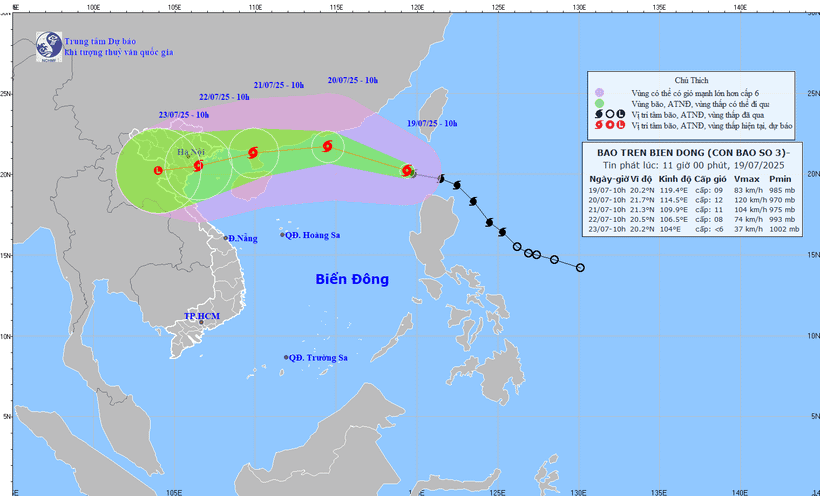 |
| Location and forecast track of Storm Wipha as of 11:00am on July 19. (Photo: National Center for Hydro-Meteorological Forecasting) |
In the Red River Delta and north-central coastal areas, officials are advised to inspect and prepare for the evacuation of residents living in unsafe housing or flood-prone zones, including river mouths and low-lying coastal areas. Measures should also be taken to secure sea and river dykes, and safeguard telecommunications and power networks to maintain uninterrupted services during and after the storm.
On the same day, the ministry’s Department of Dike Management and Disaster Prevention also issued a separate directive to agriculture-environment departments of 13 northern and north-central provinces, instructing them to prepare for storm-related risks to dike systems.
In an interview with the Vietnam News Agency, Mai Van Khiem, Director of the National Center for Hydro-Meteorological Forecasting, said Storm Wipha is currently maintaining level 9 strength and could intensify to level 12 or 13. While the storm may weaken quickly as it moves over mainland China, it is forecast to maintain strength between levels 8 and 10 as it enters the Gulf of Tonkin.
The most immediate threat over the next 24 hours, Khiem warned, is strong winds and high waves in the northern and central East Sea, particularly around the Hoang Sa island.
From July 20-21, special zones such as Bach Long Vi, Co To, and Cat Hai are expected to experience high winds and heavy rainfall. By the early hours and throughout July 22, coastal waters from Quang Ninh to Thanh Hoa are likely to face direct impacts from winds of levels 7-9, heavy downpours, water surges, and waves as high as 3 to 5 metres.
In combination with high tides, the large waves could inundate low-lying coastal areas in Quang Ninh and Hai Phong, particularly from midday on July 21 through to July 23.
On land, the storm’s impact zone is expected to span a wide area, affecting most of northeastern Vietnam, parts of the northwest, and north central provinces. Quang Ninh, Hai Phong, and coastal areas of Hung Yen, Ninh Binh, and Thanh Hoa provinces are forecast to be hardest hit by the storm’s full force.
Adoption of Law on Teachers is milestone for education in Vietnam: UNESCO Representative
UNESCO Representative and Head of Office in Vietnam Jonathan Baker highlighted the point in a recorded video to mark the adoption of the first-ever Law on Teachers in Vietnam.
Baker extended warmest congratulations to the Government of Vietnam and the Ministry of Education and Training on the adoption of the Law on Teachers, a truly bold and historic achievement.
According to the UNESCO Representative, educators and support staff can spark inclusion, challenge bias, and build confidence. There are many examples in all parts of Vietnam of how teachers and educators can make a real difference in student's lives.
Not only through what they teach in class, but also through the opportunities to grow and blossom they provide girls and boys. When schools become safe and inspiring spaces, every student has the chance to thrive.
 |
| UNESCO Representative and Head of Office in Vietnam Jonathan Baker. |
"Today, as we celebrate the passage of the Law on Teachers, we honor more than legislation. We celebrate the national commitment: that teachers are professionals, mentors, leaders, and catalysts for positive change. By placing teachers at the top of the public service pay scale, Vietnam is sending a strong and clear message: education matters-and those who nurture young minds matter most", he noted.
Baker also commended Vietnam's broader reforms, from free tuition to full-day schooling, rooted in values of equity, inclusion, and lifelong learning.
Three key areas seen as essential
The UNESCO Representative highlighted three key areas UNESCO sees as essential.
First, inclusive, context-responsive implementation of the law. UNESCO has supported Vietnam since the early stages of this policy reform, including the adaptation of the ILO/UNESCO Recommendation on the Status of Teachers.
UNESCO remains committed to an implementation that promotes leadership and coordination at all levels, gender equality, and teacher well-being, especially through the Happy Schools model.
Second, the need for robust, integrated data systems to support teachers and all education staff, including counselors, librarians, school health and facilities officers. A strong evidence base will help address shortages, meet local needs, and support sound policy decisions.
Third, the strategic use of digital technologies to strengthen professional development, improve school management, and drive innovation. UNESCO will continue to support Vietnam's digital transformation through a human-centered, inclusive approach.
As the saying goes, "It takes a village to raise a child." With this law and the upcoming revision of other laws and regulations, Vietnam makes a bold, cross-sectoral commitment to ensure no child and in fact no person is left behind, emphasized Baker.
"Let me close by reaffirming UNESCO's steadfast partnership with Vietnam. The "National Rise Era" represents a pivotal opportunity for the country to elevate its education system as a global model, one that is resilient, inclusive, and transformative", stated the UNESCO Representative.
 | Vietnam News Today (Jul. 16): Vietnam and South Africa Promote Trade and Investment Cooperation Vietnam News Today (Jul. 16): Vietnam reaffirms commitment to regional economic cooperation; Vietnam ready to share OCOP development experience with global partners; Vietnam and South ... |
 | Vietnam News Today (Jul. 17): Vietnam's two-tier local administration model conforms to global trends; Vietnam welcomes Chinese investment in smart urban development; Nordic firms show ... |

